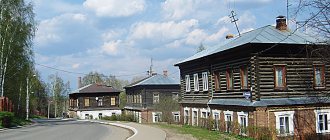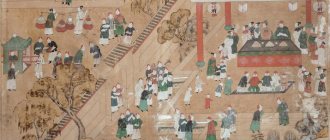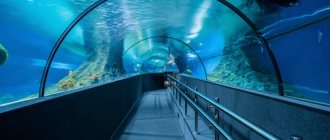Rainbow
(Khanty-Mansiysk Autonomous Okrug - Ugra)
OKATO code:
71137
Founded: Urban settlement since:
1982
City since:
1985 City of district subordination
Telephone code (reference phone)
| 34668***** | 31-1-11 |
Deviation from Moscow time, hours:
2
Geographic latitude:
62°08′
Geographic longitude:
77°28′
Altitude above sea level, meters:
70 Sunrise and sunset times in the city of Raduzhny
Sports city
Raduzhny has a special status - a closed administrative-territorial entity (ZATO). But many residents of the Vladimir region were here: with friends, relatives and acquaintances. And almost 20 thousand people live there permanently. And, in principle, they live well.
The first residential building in Raduzhny was built in 1972.
The city is less than half a century old. Raduzhny itself is young, and the population is young: the average age is 44 years. Since the city has always had a special position, very comfortable living conditions have been created in it. To say that the social infrastructure is developed is to say nothing. Here, like in Greece, everything is there: cultural centers, sports centers, cinema halls, and recreational places. Even the polyathlon section is led not just by a coach, but by three-time European biathlon champion Alexey Slepov .
Polyathlon section led by Alexey Slepov
“We have a variety of training sessions. And cycling, and running, and swimming, and the gym, and shooting at the shooting range - that is, a lot of areas are collected in sections,” says the athlete.
Many sports sections for children and youth, various leisure and cultural education - all this has been established in Raduzhny and has been operating for many years. All this is within walking distance and for many free of charge, that is, for nothing. For example, classes in the municipal swimming pool.
Swimming pool in Raduzhny
— Education of children in educational groups is completely free. We work for children from 5 years old. Our children first go to the family pool, and then from the 1st grade they begin to study in groups. People with disabilities also study for free, etc. University of the third age – those who are 60+,” explained swimming coach Elena Khramikova .
Almost 500 children attend the Youth Sports School alone.
Strength sports are very popular: Greco-Roman wrestling and boxing. Many children begin to learn the basics from a very early age.
Map
| Raduzhny: maps |
Raduzhny: photo from space (Google Maps) Raduzhny: photo from space (Microsoft Virtual Earth)
| Rainbow. Nearest cities. Distances in km. on the map (in brackets along roads) + direction. Using the hyperlink in the distance , you can get the route (information courtesy of the AutoTransInfo website) | |||
| 1 | Novoagansk | 47 (51) | SW |
| 2 | Wiggle it | 107 (291) | SW |
| 3 | High | 133 () | SW |
| 4 | Izluchinsk | 135 (183) | YU |
| 5 | Nizhnevartovsk | 141 (158) | YU |
| 6 | Megion | 142 (188) | SW |
| 7 | Strezhevoy | 155 (230) | YU |
| 8 | Kogalym | 155 (391) | Z |
| 9 | Langepas | 156 (258) | SW |
| 10 | Noyabrsk | 157 (498) | NW |
| 11 | Alexandrovskoe (Tomsk region) | 191 (2311) | YU |
| 12 | Fedorovsky | 205 (371) | Z |
| 13 | Surgut | 235 (379) | SW |
| 14 | Muravlenko | 236 (591) | NW |
a brief description of
Located in the north of Western Siberia, in the eastern part of the Middle Ob Lowland, on the river. Agan, 182 km from the railway. station Nizhnevartovsk, 475 km northeast of Khanty-Mansiysk, 975 km northeast of Tyumen.
Territory (sq. km): 169
Information about the city of Raduzhny on the Russian Wikipedia site
Historical sketch
It arose in connection with the development of Varieganskoye and other oil and gas fields. Since 1982, working settlement of Raduzhny, 08/15/1985 city. The name is artificial, with a “positive” meaning.
Economy
Leading enterprises of the city: OJSC "Varyeganneftegaz", OJSC "Varyeganneft", LLC "White Nights", OJSC "Negusneft".
Main enterprises
OIL PRODUCTION INDUSTRY
OJSC "Varyeganneftegaz" OJSC "Sidanko"
626448, Khanty-Mansiysk Autonomous Okrug - Yugra, Raduzhny, 2nd microdistrict
Offers:
Oil, associated gas
Museums, galleries, exhibition halls
Ecological and Ethnographic Museum 628462, Khanty-Mansiysk Autonomous Okrug - Ugra, Raduzhny, 7 microdistrict, no. 8
| Population by year (thousands of inhabitants) | |||||||
| 1989 | 43.7 | 2003 | 47.1 | 2011 | 43.4 | 2017 | 43.2 |
| 1992 | 46.8 | 2005 | 47.9 | 2012 | 43.6 | 2018 | 43.5 |
| 1996 | 46.6 | 2006 | 47.9 | 2013 | 43.6 | 2019 | 43.7 |
| 1998 | 46.1 | 2007 | 47.8 | 2014 | 43.2 | 2020 | 43.7 |
| 2000 | 45.8 | 2008 | 47.7 | 2015 | 42.9 | 2021 | 44.1 |
| 2001 | 46.4 | 2010 | 48.1 | 2016 | 43.0 | ||
Long before the construction of Raduzhny began, the ancestral lands of the Khanty family of the Kazamkins were located on its territory. In the area of the pier (KRP-1), which received cargo for the city under construction, there was the camp of Kozh-Ran-pugol (translated from Khanty - Motley Yar). In the vicinity of the modern city airport, the winter camps of the Kazamkins were located.
The history of Raduzhny begins with the development of the Varyoganskoye oil and gas field. The search for oil and gas here was carried out by Megion NGRE. In 1967, well No. 1 discovered a gas-bearing formation. On July 14, 1968, the drilling team of master E.F. Lipkovsky began drilling well No. 2. Three months later, the first gush of oil was obtained from it (formation V-6), which proved the need for preparation for the industrial development of the Varyoganskoye field.
In the history of Raduzhny there were several construction landings. Many organizations from Megion, Nizhnevartovsk, Surgut, Strezhevoy and others participated in the development of the Varyoganskoye field. In June 1973, SMU-9 of the Nizhnevartovskneftestroy trust sent 12 people on an MI-4 helicopter to the Agan coast, conventionally designated on the map as “Yagelny”. The builders had to prepare a place to receive people and cargo. According to the memoirs of V.M. Slyusar, we flew on two flights. The first is 8 people with tools, dishes, beds, tents. The second were the remaining builders with equipment and a radio operator with a walkie-talkie. We started with a clearing. They worked selflessly, with great enthusiasm, despite the raging vileness. A few days later they received the arriving rig workers, geologists and oil workers. Soon, collapsible houses were delivered on barges along the Agan, which formed the first street of M.I. Gubkina.
Almost simultaneously with the “village” landing, on June 12, 1973, the Strezhevsky SSU-5 brigade of Surgutneftespetsstroy landed in the area where the city is now located. The task is to build a helipad and a pier for receiving road and construction equipment. The head of the “urban” landing G.A. Medvedev later recalled: “There were solid reindeer moss around. While my comrades were preparing the place and setting up the tent, I decided to take a walk with my “vertical”. He returned with prey - a capercaillie and a loon shot on a small lake. Truly a land of unafraid birds!”
The shift camp grew. By the fall of 1973, a helipad was equipped. They built a pier, which was called “The Lighthouse” for its bright lighting, and a bathhouse. Before the onset of winter cold, eight Pyshmen houses and a dining room were installed. During the first winter we had to heat ourselves with “potbelly stoves” until the spring of 1974. We established communications, set up a first-aid post and a store.
The country needed Variogan oil. That said it all. Therefore, SMU-3 urgently prepared cluster foundations, rig workers erected drilling rigs, and UBR-1 carried out drilling of wells. The development of Varyogan was entrusted to NGDU Megionneft. On August 14, 1974, six years after the first oil gusher, the team of master I.P. Shatnova began the industrial development of the field by drilling the 201st well at pad 1A.
Not everything was smooth sailing. A major accident occurred at the first drilling rig, which they rushed to put into operation. There was a powerful release. A day later, in order to avoid an explosion, a tall gas-oil fountain was set on fire with a shot from a rocket launcher, after which the drilling rig went underground. An eyewitness to those events N.L. Michurin recalled: “For several days there was a terrible roar, like a groan. The sand in the village heated up, and the ducks, flying over the torch, instantly burned.”
On November 1, 1976, in accordance with the order of Glavtyumenneftegaz No. 521 dated September 24, 1976, the Varyoganneft NGDU was created, which was supposed to develop the Varyoganskoye, North-Varyoganskoye, Aganskoye, Van-Yoganskoye, Tagrinskoye and explore the Russkoye fields. Alexey Lvovich Reznikov was appointed its chief, and Vasily Egorovich Dobrynin was appointed chief engineer.
In 1975, the Giprotyumenneftegaz Institute developed a project for a residential complex for the rotational base of the Varyoganskoye field for 1,500 residents with a possible expansion to 3,000 residents. It provided for the construction of 11 dormitories for 102 people each, 64 single-apartment houses, a public and shopping center consisting of an administrative building, a hotel for 20 people, a club for 200 people, a store for 8 workplaces and a first-aid post.
In 1976, more than 500 people lived in the village. In 1978, the population of Raduzhny was about 4,000 people, including more than 200 children, which contradicted the ban on family settlement “until appropriate conditions were created.” But people got married, brought and had children.
There are many versions about how the name of the village was chosen. In our opinion, the most reliable story was told by the former deputy chairman of the Nizhnevartovsk regional executive committee, now A.P. Kaurtaev: “Over time, the question arose about the name of the emerging village in official documents. We suggested "Yagelny". It sounds beautiful and conveys national flavor. But a refusal came from the Khanty-Mansiysk regional executive committee. The geographical name must be unique, and Yagelny has already been to Yamal. Then a competition was announced. There were so many offers! Bely Yar, Sosnovy Bor, Neftegrad, Nefteagansk, it was even proposed to combine the words “oil” and “deer” in the name. Sergei Fedorovich Shekhirev, secretary of the district executive committee (who has already passed away) named the most accurate and secret name - Rainbow! Indeed, so many flowers! Yellow-green pine forest, blue-blue Agan, white sand, rainbow...” On March 14, 1978, the Tyumen Regional Executive Committee, at the request of the regional executive committee, registered the village of Raduzhny as the center of the village council of the same name in the Nizhnevartovsk region. In April 1978, the first elections of deputies to the Rainbow Village Council were held. Anatoly Mikhailovich Fisenko, who had previously worked as the head of the SMU-58 section, was elected chairman of the executive committee.
A kindergarten and school were not provided for at the rotational base. In addition, the residential complex turned out to be cut off from the world - there was no communications department or radio center. Therefore, the village council of Raduzhny raised the issue of building children's institutions with the management of the Varyoganneft oil and gas production department, addressed the Ministry of Oil Industry, the editorial office of the newspaper Pravda, and finally, the Chairman of the Presidium of the Supreme Soviet of the USSR, General Secretary of the CPSU Central Committee L.I. Brezhnev.
In October 1978, the Minister of the Oil Industry, Deputy of the Supreme Soviet of the USSR N.A. intervened in the situation. Maltsev. In September 1979, school No. 1, built in the pioneer part of the village, opened, and in the same year a kindergarten and a post office began operating.
In the summer of 1978, in connection with the current demographic situation and prospects for the development of the Varyoganskoye field, the management of Varyoganneft turned to the party and Soviet bodies of the Nizhnevartovsk region and the Tyumen region with a proposal to create a workers' village for 12 thousand inhabitants on the basis of a rotational complex. This idea received support, and the Giprotyumenneftegaz Institute began design work. District authorities moved the construction site seven kilometers west of the rotation base. It was decided to build the village in a new place, from scratch - without temporary buildings. In the new village, all social and cultural facilities and 10–15% of residential buildings, built in three- and five-story versions, were capital. 20% of the population had to live in dormitories. At the first stage, 4,000 people lived in wooden one- and two-story buildings.
In 1978, the NGDU “Varyoganneft” club was put into operation, where films were shown and a vocal and instrumental ensemble, a theater group, and vocal and reading groups operated. A little later the library opened.
In 1979, NGDU Varyoganneft moved to the village of Raduzhny. This circumstance could not but affect the acceleration of the development of the village. In 1980, oil production increased to 10 million tons per year. But the oil workers were not ready to move to the field. By that time, Raduzhny lacked even a minimum of comfortable housing and production bases. And the village began to feel feverish. In less than a year, almost 50 percent of employees, mostly experienced specialists, left Varyoganneft. Having apartments in the city, they did not want to move to an unsettled place.
In 1980, Nikolai Mikhailovich Tabolin was elected chairman of the Rainbow Village Council. He led the village and city until the end of 1985. At the end of February, a detailed breakdown begins at the site of the future 1st microdistrict of the city. The master plan for the development is being developed by the Novosibgrazhdanproekt design institute. In September, 54 specialists of the interdepartmental commission approved the plans for the master plan for the construction of Raduzhny. The dispute over whether Raduzhny should be a workers' settlement or a city with a population of 40 to 60 thousand ended in favor of the city.
By the end of 1980, the “betonka” was put into operation - the first year-round transport artery connecting Raduzhny with Nizhnevartovsk. The bridge over the Agan is open. Before this, the future of the city could only be reached by helicopter, river or winter road.
The general developer for the first five years of construction of Raduzhny is the Ministry of Oil Industry represented by NGDU Varyoganneft, under which a customer service was created in 1980. The general contractor was the newly organized SMU-1 Nizhnevartovskstroy. In 1980, SMU-5 of the Sibpromekskavatsiya trust began work, which was created specifically for the construction of a new city, as a subcontracting organization. On December 25, during the construction of the first cobblestone 12-apartment building, the first pile was driven in a solemn ceremony and a capsule with the text of an appeal to youth 2080 was laid.
At the beginning of 1981, the Raduzhninsky village police department of the Nizhnevartovsk District Department of Internal Affairs was formed. It consisted of three officers: the head of the department, Pyotr Nazarenko, the district inspector, Mikhail Vlasov, and the head of the passport office, Rufina Akhmetzyanova. Soon they were joined by criminal investigation inspector Vladimir Vovk and investigator Tatyana Miroshnichenko. The department changed its location several times. A trailer, an office in the building of the village council, several rooms in the hostel No. 6 on Shkolnaya Street. With the assignment of city status to Raduzhny, the village department was transformed into the GOVD, the first head of which was Lieutenant Colonel Vladimir Nikitich Panov.
By the end of the year, 8,700 people lived in the village, 17 organizations were working in the development and development of deposits. A children's center with 140 places was opened; in fact, 188 children attended it.
In November-December 1981, the first tower cranes were transferred to the construction site of the future city. The Irkutsksibzhilstroy trust begins construction of the first five-story buildings. But, unfortunately, it was not possible to abandon the construction of “wooden buildings”. The development of oil fields is in full swing, the number of employees in organizations is increasing. We have to build two-story, wooden, barracks-like houses, which will become a haven for many Rainbow residents for many years. In the meantime, the first two wooden dormitories for builders are being built.
In 1982, trust site No. 2 was relocated to the regional village of Raduzhny for the construction of housing and social and cultural facilities. SMU-1 became operationally subordinate to the trust site. In August 1983, trust site No. 2 was transformed into construction and installation trust No. 2, located in the village of Raduzhny. The new enterprise was headed by F.L. Zozulevich. The trust becomes the general contractor for the construction of the future city. In March 1982, construction of water treatment facilities began. This year, the Irkutsksibzhilstroy trust commissioned the first capital five-story house of the Irkutsk series under building number 137. It still stands at the address 1 microdistrict, No. 9.
In September 1983, the first “urban” school in capital construction No. 2 was opened. In Raduzhny there were 51 organizations, 55 dormitories, 150 houses, 401 beams. The population was 16,331 people, including 4,786 women, 4,295 children under 14 years of age. 10,000 shift workers worked at the fields.
In March 1984, kindergarten-nursery No. 2 opened. On the eve of the November holidays, the first capital club “Builder” was put into operation, later renamed “Komsomolets”. Now this building houses the CST “Rus”.
On April 4, 1985, by order of the Ministry of Oil and Gas Industry, in order to accelerate the commissioning of the Varyoganne group of fields, the Varyoganneftegaz PA was created, which became the general developer and city-forming enterprise of Raduzhny. N.P. was appointed General Director of PA VNG. Zakharchenko, chief engineer F.N. Marichev.
On August 15, 1985, by Decree of the Presidium of the Supreme Soviet of the RSFSR, Raduzhny received city status. On August 30, 1985, the first session of the city Council of People's Deputies took place.
By this time, the city's population numbered more than 26 thousand people. People mostly lived in “wooden buildings” (1.2 microdistrict). But housing construction proceeded at an unprecedented pace. Construction and installation trust No. 2 in microdistricts 1 and 3 erected more than two dozen “Irkutsk” five-story buildings. The Permsibstroy trust site has commissioned the first nine-story residential building (No. 4 in the 3rd microdistrict), and the second is in the process of completion. In parallel with the construction of housing, an airport, a bakery, a bath and laundry plant, a recreation center “Neftyanik”, a garage cooperative of the same name, and a boiler house were built.
Materials used:
A. Strabykin, R. Tyurin “Rainbow City with a Great Destiny” // “Ugra” No. 3, 2004;
R. Tyurin, F. Akhmetgalieva “Give the city to friends as a souvenir.” Ekaterinburg, 2010
Outdoors
Time for business - time for fun. You can relax in Raduzhny in the lap of nature. The park of culture and recreation was recently renovated. There are trampolines, rides, playgrounds and sports equipment. The park is illuminated, so you can stay there even until nightfall.
“The most important thing is that we are safe.” There are more than 18 types of cameras installed in the park. The system is designed in such a way that when you go from one point of the park to another, you will see at least three types of cameras,” explained director Alexander Zakharov .
Postman Pechkin also entered the city park
Last year, fiber optics were installed in the park. This gives new opportunities. In the near future, Wi-Fi zones and entertainment spots will be organized there, where residents will feel comfortable and cozy.
Marine theme
Raduzhny is a young city, but there are plenty of older people. Military pensioners received housing here after the collapse of the USSR. There are many military sailors among them. They even gave this land city a maritime flavor.
Valery Zhirnov, Chairman of the Council of Veterans of the Raduzhny ZATO
— The first house under the Ministry of Defense was built for military sailors — in 1993. Subsequently, 6 more houses were erected. Then there were not only sailors, but also representatives of other branches of the Armed Forces who received housing here. But the city is still called a sea city,” said Valery Zhirnov , chairman of the Council of Veterans of the closed city of Raduzhny.
There are a total of 74 multi-storey buildings in Raduzhny
The Veterans Council is an influential organization. The city administration consults with her. And this is understandable. There are more than 5 thousand pensioners in Raduzhny. A quarter of the population. Moreover, he is active and cares about the city.









